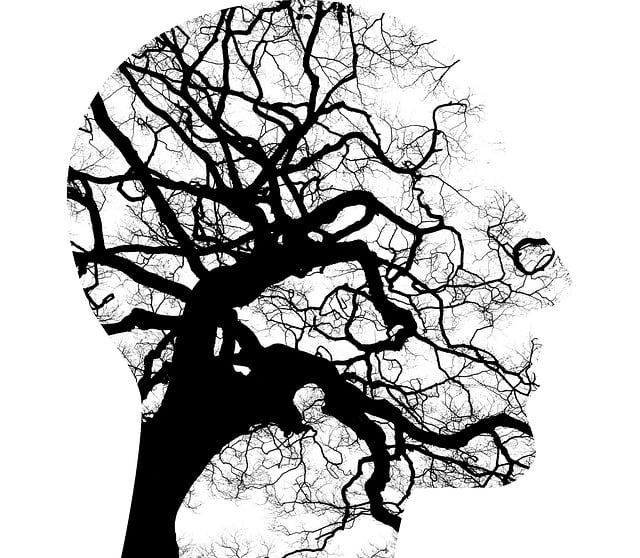Crisis Intervention Teams (CITs) are vital in communities like Lone Tree, offering specialized suicide prevention therapy and de-escalation services. Effective CIT training equips mental health professionals with skills to manage crises, reduce burnout, and improve community well-being. Lone Tree's approach emphasizes empathy, early intervention, and community resilience through human connection and stigma reduction. Comprehensive training programs teach de-escalation, active listening, and tailored crisis guidance for diverse populations, strengthening cultural competency. Sustaining CITs requires ongoing support, regular training, and integration with Mental Health Education and Conflict Resolution techniques, leading to better outcomes for at-risk individuals.
Crisis intervention teams (CITs) play a vital role in communities, providing immediate support during mental health crises. This article explores comprehensive training programs designed to equip professionals with essential skills for effective CIT interventions. We delve into the key components of these programs, highlighting their impact on community well-being, particularly focusing on the success of Lone Tree Suicide Prevention Therapy. By examining practical techniques taught and implementation strategies, we uncover how these training sessions foster sustainable CIT effectiveness.
- Understanding Crisis Intervention Teams: Their Role and Importance
- Key Components of Effective Crisis Intervention Training Programs
- The Impact of Lone Tree Suicide Prevention Therapy on Community Support
- Practical Skills and Techniques Taught in These Training Sessions
- Implementing and Sustaining Crisis Intervention Team Effectiveness
Understanding Crisis Intervention Teams: Their Role and Importance

Crisis Intervention Teams (CITs) are specialized groups of professionals trained to handle critical situations involving individuals experiencing a mental health crisis. These teams play a pivotal role in communities, particularly in areas like Lone Tree Suicide Prevention Therapy, where access to immediate support is vital. By integrating CITs into emergency response systems, we ensure that those in distress receive prompt, compassionate, and effective care.
The significance of these teams lies not only in their ability to de-escalate high-risk situations but also in promoting better mental health outcomes. They provide a crucial link between acute interventions and ongoing support, often guiding individuals towards developing essential self-care routines for long-term well-being. This comprehensive approach, including risk assessment skills for professionals, is key to fostering resilient communities where crisis intervention guidance can make a profound difference in people’s lives.
Key Components of Effective Crisis Intervention Training Programs

Effective crisis intervention training programs are meticulously designed to equip mental health professionals with the skills and knowledge needed to handle critical situations sensitively and efficiently. These programs typically include a multi-faceted approach, encompassing theoretical understanding, practical role-playing exercises, and ongoing support networks. The key components that contribute to their success involve fostering empathy, imparting evidence-based strategies for de-escalation, and promoting self-care practices among practitioners. By integrating these elements, crisis intervention training ensures professionals are well-prepared to navigate complex scenarios, such as those involving suicidal ideation or traumatic events, effectively providing Lone Tree suicide prevention therapy.
Moreover, successful programs also delve into comprehensive risk management planning for mental health professionals, emphasizing the importance of recognizing and mitigating personal risks associated with handling distressing cases. Mental health education programs design should prioritize developing resilience and trauma support services within the workforce to prevent burnout and promote long-term sustainability in delivering quality care. These holistic training initiatives not only benefit individuals but also contribute to a robust framework for crisis management in various settings, ultimately enhancing the well-being of both professionals and those they serve.
The Impact of Lone Tree Suicide Prevention Therapy on Community Support

The implementation of Lone Tree Suicide Prevention Therapy has had a profound impact on community support networks and mental health awareness. This innovative approach emphasizes the power of human connection and empathy-building strategies, fostering a sense of belonging and understanding within communities. Through various compassion cultivation practices, individuals equipped with these skills become more attuned to recognizing signs of distress, enabling early intervention and potentially saving lives.
The therapy focuses on teaching communication strategies that encourage open dialogue about mental health struggles. By empowering community members to offer support and guidance, it creates a safety net where individuals feel less isolated and more inclined to seek help. This collaborative effort not only reduces the stigma surrounding suicide prevention but also strengthens community resilience, ensuring a more supportive environment for those at risk.
Practical Skills and Techniques Taught in These Training Sessions

In crisis intervention team training programs, participants gain a comprehensive set of practical skills and techniques designed to effectively navigate high-stress situations. These sessions equip healthcare providers with the knowledge to recognize early warning signs of mental health crises, including suicide ideation, and offer immediate, compassionate support. Through interactive simulations, role-playing exercises, and guided discussions, trainees learn de-escalation strategies, active listening techniques, and crisis intervention guidance tailored for diverse populations.
The training delves into resilience building, fostering the ability to handle challenging scenarios with composure and adaptability. It also emphasizes cultural competency, ensuring healthcare providers can offer sensitive and effective care across different cultural backgrounds. Lone Tree Suicide Prevention Therapy is a key component, focusing on identifying suicidal behaviors, providing suicide prevention resources, and establishing safety plans. These programs ultimately empower participants to make a tangible difference in their communities by enhancing their ability to provide timely, quality crisis intervention.
Implementing and Sustaining Crisis Intervention Team Effectiveness

Implementing and sustaining the effectiveness of Crisis Intervention Team (CIT) training programs is paramount for addressing mental health crises in communities. The success of these teams often hinges on ongoing support and resources, as well as regular refresher training to keep skills sharp. Lone Tree Suicide Prevention Therapy, for instance, has seen significant benefits from such programs, leading to improved outcomes for at-risk individuals.
Effective CIT training goes beyond technical skills like crisis de-escalation and suicide assessment. It incorporates Mental Health Education Programs Design that promote mindfulness meditation and Conflict Resolution Techniques, fostering a holistic approach to crisis intervention. By integrating these strategies into the fabric of community support systems, sustained effectiveness can be achieved, ensuring that teams are well-equipped to handle a wide range of mental health challenges.
Crisis intervention team training programs, encompassing essential components like practical skills, community support, and effective implementation strategies, play a pivotal role in enhancing mental health care. The success of these programs is evident in approaches like the Lone Tree Suicide Prevention Therapy, which has positively impacted communities by fostering a supportive network. By equipping teams with the right tools and knowledge, we can ensure better crisis management and improved well-being for all.














